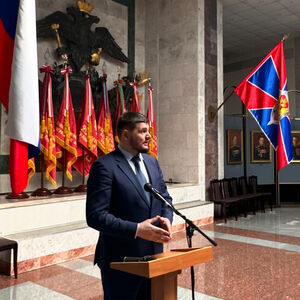Диссертация (1098795), страница 34
Текст из файла (страница 34)
P. 281 – 283.207. Gruselier J. H. A review of impact of hypnosis, relaxation, guided imagery and individualdifferences on aspects of immunity and health // Stress: The International Journal on theBiology of Stress. 2002. Vol.5. P. 147 – 163.208. Gruzelier J. H. The state of hypnosis: evidence and applications // Quarterly Journal ofMedicine.1996. Vol.89. P. 313 – 317.209.
Haber C.H., Nitkin R., Shenker I.R. Adverse reactions to hypnotherapy in obeseadolescents: a developmental viewpoint // Psychiatric Quarterly. 1979. Vol. 51. P. 55 – 63.210. Habermas T., Bluck, S. Getting a life: The emergence of the life story in adolescence //Psychological Bulletin. 2000. Vol. 126. P. 748 – 769.211.
Haden C. A., Haine R. A., Fivush R. Developing narrative structure in parent-childreminiscing across the preschool years // Developmental Psychology. 1997. Vol. 33 (2). P.295 – 307.212. Haggard P., Cartledge P., Dafydd M., Oakley D. A. Anomalous control: when ‘free will’ isnot conscious // Consciousness and Cognition. 2004. Vol. 13. P. 646 – 654.213. Halligan P.W., Athwal B.S., Oakley D.A., Frackowiak R.S.J.
The functional anatomy of ahypnotic paralysis: implications for conversion hysteria // The Lancet. 2000. Vol. 355. P.986 – 987.214. Hattie, John. Self-concept. Hillsdale. NJ, US: Lawrence Erlbaum Associates. 1992. 307 p.215. Hare R. Anxiety, Temporal estimation, and rate of counting // Perceptual and Motor Skills.1963. Vol.16. P.
441 – 444.216. Hargadon R., Bowers K.S., Woody E. Z. Does counter- pain imagery mediate hypnoticanalgesia? // Journal of Abnormal Psychology. 1995. Vol. 104. P. 508 – 516.149217. Harter S. Cognitive-developmental process in the integration of concepts about emotionsand the self // Social Cognition. 1986. Vol.
4. P. 119 – 151.218. Harter S., Buddin B.J. Children’s understanding of the simultaneity of two emotions: a fivestage developmental acquisition sequence // Developmental Psychology. 1987. Vol. 23. P.388 – 399.219. Harvey A. G., Bryant R. A., Dang S. T. Autobiographical memory in acute stress disorder// Journal of Consulting and Clinical Psychology. 1998. Vol.
66(3). P. 500 – 506.220. Harvey R. F., Hinton R. A., Gunary R. M., Barry R. E. Individual and group hypnotherapyin treatment of refractory irritable bower syndrome // The Lancet. 1989. P. 424 – 425.221. Heap M., Naish P. Introduction to hypnosis / M. Heap (ed.) Hypnotherapy: A Handbook.Second Edition. Milton Keynes: Open University Press. 2012. 256 p.222. Heaps C. M., Nash M. Comparing recollective experience in true and falseautobiographical memories // Journal of Experimental Psychology: Learning, Memory, &Cognition. 2001. Vol.
27. P. 920 – 930.223. Higgins E. T. Self-discrepancy: A theory relating self and affect // Psychological Review.1987. Vol. 94. P. 319 – 340.224. Hilgard E. R. A neodissociation interpretation of hypnosis / S. J. Lynn and J. W. Rhue(ed.) Theories of Hypnosis: Current Models and Perspectives. New York. Guilford Press.1991. P. 37 – 58.225. Hilgard E. R. A neodissociation interpretation of pain reduction in hypnosis //Psychological Review. 1973. Vol.
80. P. 396 – 411.226. Hilgard E. R. Neodissociation theory / S. J. Lynn and J. W. Rhue (ed.) Dissociation:Clinical and Theoretical Perspectives. New York: Guilford Press. 1994. P. 32 – 51.227. Hilgard E.R. Dissociation and theories of hypnosis / E. Fromm and M. R. Nash (ed.),Contemporary Perspectives in Hypnosis Research. New York: Guilford Press. 1992. P. 69– 101.228.
Hilgard J.R., Hilgard E.R., Newman M. Sequelae to hypnotic induction with specialreference to earlier chemical anesthesia // Journal of Nervous and Mental Disease. 1961.Vol. 133. P. 461 – 478.229. Hirst W., Phelps E.A., Meksin R., Vaidya C.J., Johnson M.K., Mitchell K.J., BucknerR.L., Budson A.E., Gabrieli J.D., Lustig C., et al.
A ten-year follow-up of a study ofmemory for the attack of September 11, 2001: Flashbulb memories and memories forflashbulb events // Journal of Experimental Psychology: General. 2015. Vol. 144(3). P. 604–623.150230. Holland A.C., Kensinger E.A. Emotion and autobiographical memory // Physics of LifeReviews.
2010. Vol. 7. P. 88 – 131.231. Howard R., Hong N. S. Effects of coping style on interrogative suggestibility // Personalityand Individual Differences. 2002. Vol. 33. P. 479 – 485.232. Hyman I. E., Billings F. J. Individual differences and the creation of false childhoodmemories // Memory. 1998. Vol. 6. P. 1 – 20.233. Hyman I. E., Faries J. M. The functions of autobiographical memory / M. A.
Conway, D.C. Rubin, H. Spinnler, W. A. Wagenaar (eds.), Theoretical perspectives onautobiographical memory. Dordrecht, The Netherlands: Kluwer Academic Publications.1992. P. 207 – 221.234. Hyman I. E., Pentland J. The role of mental imagery in the creation of false childhoodmemories // Journal of Memory & Language. 1996. Vol. 35.
P. 101 – 117.235. Hyman I.E., Husband T.H., Billings F.J. False memories of childhood experiences //Applied Cognitive Psychology. 1995. Vol. 9 (3). P. 181 – 197.236. Ishikawa K., Okubo M. Overestimation of the subjective experience of time in socialanxiety: Effects of facial expression, gaze direction, and time course // Frontiers inPsychology. 2016.
Vol. 7. P. 1-9237. Johnson M. E., Hauck C. Beliefs and opinions about hypnosis held by the general public:A systematic evaluation // American Journal of Clinical Hypnosis. 1999. Vol. 42. P. 10 –20.238. Josephson B., Singer J.A, Salovey.
Mood regulation and memory: Repairing sad moodswith happy memories // Cognition and Emotion. 1996. Vol. 10(4). P. 437 – 444.239. Kabat-Zinn J., Massion A. O., Kristeller J., Peterson L. G., Fletcher K. E., Pbert L. et al.Effectiveness of a meditation – based stress reduction program in the treatment of anxietydisorders // American Journal of Psychiatry. 1992. Vol. 149. P. 936 – 943.240. Kabat-Zinn J. Full Catastrophe Living: Using the Wisdom of Your Body and Mind to FaceStress, Pain and Illness. New York: Delacorte Press.
1994. 650 p.241. Kebbell M. R., Wagstaff G. F. Hypnotic interviewing: The best way to intervieweyewitnesses? // Behavioral Sciences and the Law. 1998. Vol. 16. P. 115 – 129.242. Kennedy, Q., Mather, M., Carstensen, L. L. The role of motivation in the age-relatedpositivity effect in autobiographical memory // Psychological science.
2004. Vol. 15(3). P.208-214.243. Kihlstrom J. F. Consciousness in hypnosis / P. D. Zelazo, M. Moscovich and E. Tompson(ed.) Cambridge Handbook of Consciousness. New York: Cambridge University Press.2007. 999 p.151244. Killen P. R., Nash M. R. The four causes of hypnosis // International Journal of Clinicaland Experimental Hypnosis. 2003. Vol. 51. P. 195 – 231245. Kirsch I., Mazzoni G., Montgomery G. Remembrance of Hypnosis Past // AmericanJournal of Clinical Hypnosis. 2007.
Vol. 49(3). P. 171 – 178.246. Kirsch I. Clinical hypnosis as a nondeceptive placebo: empirically derived techniques //American Journal of Clinical Hypnosis. 1994. Vol. 37. P. 95 – 106.247. Kirsch I. Response expectancy as a determinant of experience and behavior // AmericanPsychologist. 1985. Vol. 40. P. 1189 – 1202.248.
Kirsch I. The social learning theory of hypnosis / S. J. Lynn and J. W. Rhue (ed.) Theoriesof Hypnosis: Current Models and Perspectives. New York: Guilford Press. 1991. P. 439 –466.249. Kirsch I., Lynn S. J. Dissociation theories of hypnosis. Psychological Bulletin. 1998.Vol.123.
P. 100 – 115.250. Kirsch I., Lynn S. J. Hypnotic involuntariness and the automaticity of everyday live //American Journal of Clinical Hypnosis. 1997. Vol. 40. P. 329 – 348.251. Kirsch I., Lynn S. J. The automaticity of behavior in clinical psychology // AmericanPsychologist. 1999. Vol. 54. P. 504 – 575.252. Kirsch I., Montgomery G., Sapirstein G.
Hypnosis as an adjunct to cognitive- behavioralpsychotherapy: a meta- analysis // Journal of Consulting and Clinical Psychology. 1995.Vol. 63. P. 214– 220.253. Kirsch I., Wickless C., Moffitt K. H. Expectancy and suggestibility: are the effects ofenvironmental enhancement due to detection? // International Journal of Clinical andExperimental Hypnosis.
1999. Vol. 47. P. 40 – 45.254. Klein S.B. Future mental time travel: types of memory, types of selves and types oftemporality // Social Cognition. 2013. Vol. 31(3). P. 417 – 426.255. Klein S.B. The complex act of projecting oneself into the future // WIREs CognitiveScience. 2013.
Vol. 4. P. 63 – 79.256. Klein S.B. The temporal orientation of memory: It's time for a change of direction //Journal of Applied Research in Memory and Cognition. 2013. Vol 2(4). P. 222 – 234.257. Klein S.B., Robertson T.E., Delton A.W. Facing the future: memory as an evolved systemfor planning future acts // Memory & Cognition.
2010. Vol. 38. P. 13 – 22.258. Köhler, C. A., Carvalho, A. F., Alves, G. S., McIntyre, R. S., Hyphantis, T. N., &Cammarota, M. Autobiographical memory disturbances in depression: a novel therapeutictarget? // Neural plasticity. Vol.2015, P.1-14152259. Koriat A., Goldsmith M., Pansky A. Toward a psychology of memory accuracy // AnnualReview of Psychology. 2000. Vol. 51. P. 481 – 537.260. Kuwabara K. J., Pillemer D.
















